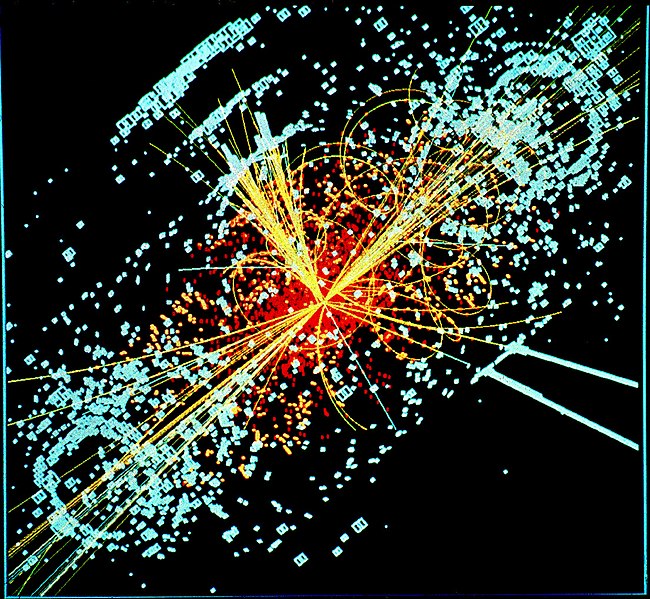E=MC “Woah”
Hello everyone, and welcome to the first edition of E=MC^Woah, the dumbest sounding column with the smartest sounding topics! We have all had some exposure to those science-based facts. The ones that make your head spin and have you questioning your very existence. Whether it be scrolling through social media or hearing it from one of your friends, chances are you have had your mind blown by some tidbit of information at least one time in your life. However, that is all it usually is, a tidbit. After initially hearing this “perception-of-the-universe” changing piece of information, we usually never dig deeper. BUT NOT ANYMORE! Hi, I am Lucca Paris, and it is my goal in this science-based series to expose you to those mind-blowing concepts that we all desire to understand and actually try to explain them! (*key word try) In the first-ever outing of this column, though, I wanted to cover something that may not be looked at as mind-blowing, but as just straight-out strange. Something that may explain one of the universe’s most seemingly simple, but actually complex, features. So come along with me, dear reader, as we explore the God Particle.
Now, when one hears the name God Particle, a grain of sand with divine power may come to mind. However, this is not the case at all, and the aforementioned name is actually despised by some in the physics community for being misleading. The official name of the particle is actually the Higgs Boson, and while this name is a lot less exciting, it makes a lot more sense when explained. Before we delve into this though, a small physics lesson would be appreciated. According to CERN (the European Center for Nuclear Research) scientists Dave Barney and Steve Goldfarb, all of the fundamental particles in the universe (the pieces of matter that cannot be broken down any further) can be separated into two categories. On one side of the universal spectrum are fermions. These particles are the things that make up matter. Everything you see around you is made up of fermions. They are essentially the building blocks of the universe. Now, on the other side of the spectrum are bosons. These particles are the entities responsible for all forces. So basically, these particles are kind of important to the basic existence of everything. However, what do they have to do with the God Particle? Well, that all revolves around the standard model of particle physics.
Basically, according to CERN, the standard model is the thing that tries to explain the interaction of bosons and fermions in the universe. In addition, the particles in the standard model are sorted by mass, but as explained by Barney and Goldfarb, where this mass comes from has never really been understood, and this is where we get to the Higgs Boson. In 1964, a group of scientists (R. Brout, F. Englert, P. Higgs, G.S. Guralnik, C.R. Hagen, and T.W.B. Kibble) proposed an answer to the above question. They theorized that, throughout the universe, there is an omnipresent field that’s function is to give everything that interacts with it mass. In addition, they said that the more something interacts with the field, the more mass it will have. This entity was eventually named the Higgs Field, fittingly after one of the physicists who proposed it, Peter Higgs. However, since quantum fields cannot easily be detected, physicists needed to find out a way to discover if this mass-generating essence actually existed. Luckily though, such a method exists. Barney and Goldfarb (who have become very valuable assets in the explanation of this topic- thanks guys) state that, while quantum fields may sound like all-powerful phenomena that cannot be affected, this is actually not true. In fact, according to them, these fields can actually be excited. Furthermore, when these entities are excited, their “excitement” can be observed in the form a particle correlated with that field, a particle that can prove their existence. And as you may have guessed, the theoretical particle associated with the Higgs Field was given the name the Higgs Boson (boson as it deals with forces). This particle is the key to provide an explanation to one of the most important characteristics of the universe, something that basically everything depends on to exist, and said key may have been found.
That’s right, the theoretical particle mentioned above may not be so theoretical, because in 2012 (very recent for a theory that had been in play for 55 years), teams working at the Large Hadron Collider (the world’s largest particle accelerator) discovered a particle they are almost positive is the Higgs Boson. They have every right to be positive, too, as according to the National Geographic article “God Particle” Found? “Historic Milestone” From Higgs Boson Hunters, the data collected shows only a 1/1000000 chance that what the researchers did find existence of was not the Higgs Boson. “What does this mean?” you may be asking. Well, if it was not made clear enough above, this discovery not only helps further complete the aforementioned standard model but opens the door for explaining why the universe is even here. So, although many researchers may not like the name, I believe that, for something somewhat responsible for the existence of everything, the term “God Particle” is somewhat appropriate.

Lucca is a 3rd year Crimsonian member. He is involved in theater, orchestra, tennis, and National Honors Society.











